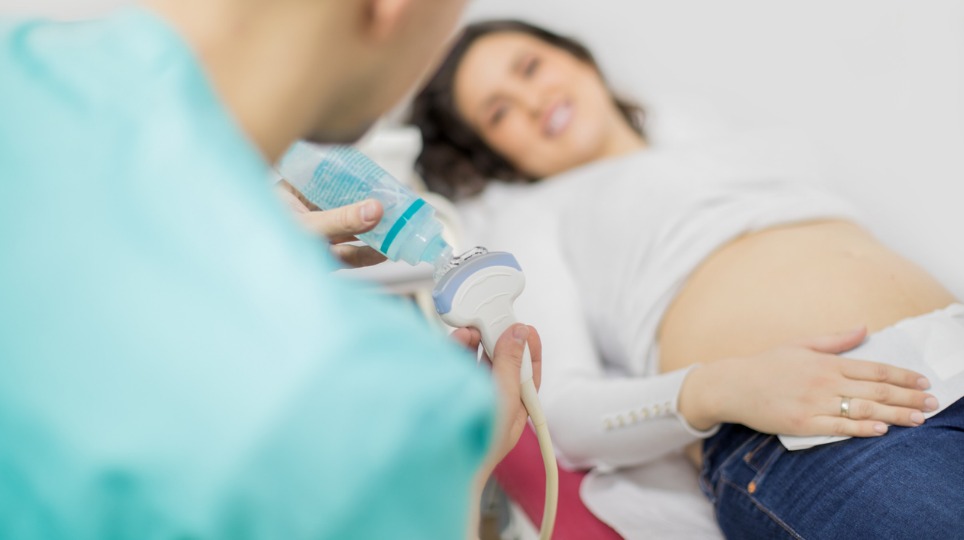Ultrasound exams are routine when you’re pregnant. Learn how these are done and what they can tell you.

Getting ultrasounds is important to your pregnancy, says Dr TC Chang, an obstetrician & gynaecologist at WC Cheng & Associates at Thomson Medical Centre. The scan helps to determine the development of your baby and check for abnormalities, which is integral to ensuring he or she is growing healthily.
Dr Chang has important details about your ultrasound scan.
Why are ultrasound exams important during a pregnancy?
An ultrasound must be done at every trimester of your pregnancy. At the first trimester, it helps confirm a healthy pregnancy in the womb and the number of babies for this pregnancy. An ultrasound also measures nuchal translucency (NT) ― the amount of fluid under the skin at the back of your baby’s neck ― to detect chromosomal abnormalities and other birth defects. It determines the baby’s length, too, which will help date the pregnancy accurately.
During the second trimester, a foetal anomaly scan is done. This not only assesses your baby’s size, but also checks for structural defects in the development of major organs as well as chromosomal abnormalities. During the third trimester, an ultrasound is done again to evaluate your baby’s growth.
So, what really happens during an ultrasound?
An ultrasound can be performed in the doctor’s clinic or the imaging department of the hospital. It uses high frequency sound waves to create images of your baby within the uterus. Here’s how it’s done: As you lie on the examination table, the doctor or sonographer places a warm conductive jelly on your abdomen, then moves a transducer device over the jelly.
What does the doctor look out for during an ultrasound?
In the first trimester, he or she is checking for the following:
(a) The position of implantation, in order to make sure your baby is not growing in a fallopian tube or ovary;
(b) Your baby’s heart beat;
(c) Your baby’s length, in order to determine its age;
(d) Your baby’s NT measurement, which can single out up to 90 per cent of pregnancies affected by Down syndrome. The thicker the baby’s neck, the greater is the risk of Down syndrome. Other organs involved during this scan include the nasal bone, brain, stomach, bladder, hands and feet. If performed together with the non-invasive prenatal testing (Harmony/Panorama), NT can detect up to 96 per cent of babies with Down syndrome.
In the second trimester, your doctor is checking for the following:
(e) Foetal biometry, which measures the position of your baby and the placenta. The measurements of his or her head, abdomen and long bones indicates not just the duration of pregnancy but also that your baby’s size is appropriate. It is crucial to determine the position of the placenta and that your baby is lying in the uterus. Placenta previa, where the placenta lies low in the uterus and partially or completely covers the cervix, can lead to bleeding during pregnancy. If it does not move in the last few weeks of pregnancy, a vaginal delivery might not be possible;
(f) Structural defects in the development of your baby’s major organs, such as brain, eyes, nose and heart, as well as physical abnormalities such as clubfoot.
“If the ultrasound examination occurs in the early stage of your pregnancy…you may be asked to ensure a full bladder. This allows the sonographer to get a clear image of your foetus and reproductive organs. To have a full bladder, drink at least three glasses of water before your appointment.”
What’s the difference between 3D and 4D scans?
A 3D scan shows your baby in three dimensions while a 4D scan shows moving 3D images of your baby. With the latter, you can make out your baby’s exterior instead of his or her internal organs. You may see the shape of his or her mouth and nose and even see him or her yawning. These 4D scans are performed by expert sonographers and need to be booked ahead of time.
Are there health risks associated with ultrasounds?
Diagnostic ultrasound does not pose any risk to a pregnant mother nor to her foetus. The safety of ultrasound in pregnancy has been endorsed by the European Federation of Societies of Ultrasound in Medicine and Biology. Follow-up studies of infants and children exposed to ultrasound before birth have revealed no damaging effects.
Nonetheless, it is prudent to keep an ultrasound examination to a minimum. Before you agree to an ultrasound examination, find out the reason and how it affects your pregnancy.
Make sure that you have your NT scan at between 11 and 13 weeks of pregnancy and your FA scan at between 18 and 22 weeks. Among the reasons for extended periods for ultrasound is misdiagnosis. It is therefore ideal if your obstetrician-gynaecologist is a foetal diagnostic specialist.
How should you prepare for an ultrasound?
If the ultrasound examination occurs in the early stage of your pregnancy, say before 20 weeks, you may be asked to ensure a full bladder. This allows the sonographer to get a clear image of your foetus and reproductive organs. To have a full bladder, drink at least three glasses of water before your appointment. If you are feeling anxious before the ultrasound, especially by the thought of finding something out of the ordinary, distract yourself by, for example, calling a friend, while in the waiting room.
Finally, what can’t an ultrasound detect?
Ultrasound cannot pick up characteristics of your baby’s physical appearance such as eye or hair colour. Chromosomal ultrasound markers require further testing to confirm a diagnosis. Neurological disorders such as ADHD and autism cannot be detected by ultrasound either.
Photos: iStock
Like us on Facebook and check SmartParents regularly for the latest reads!
Elsewhere on SmartParents.sg…
9 mind-blowing things that happen to your pregnant body
